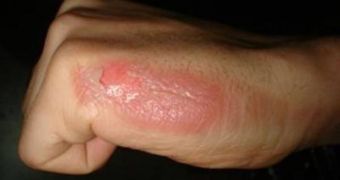Usually, when a burn victim is brought into the emergency room, their wounds are treated using some type of silver-based gel, which is known to promote and accelerate healing. Silver sulfadiazine and silver nitrate are potent germ fighters, and their actions have saved the lives of countless patients that would have otherwise died because of their injuries. A team of Indian researchers, led by expert Kishore Paknikar, recently reported the successful development of a silver nanoparticle-based gel that seems to work even better than its already established counterparts.
Burn wounds are extremely dangerous, because they take a lot out of the body. Additionally, the third- and fourth-degree varieties are very difficult to treat, because they spread even after the original fire source has been removed. This makes the immediate hours after the patient has been committed into the hospital critical to their survival. Also, this is the time when the efficacy of medical treatments pays off or doesn't. It's for these crucial hours that the new gel was devised.
The nanoparticles that make up the medicine are roughly 50,000 times smaller than the width of a human hair, a trait that its creators believe makes an important contribution to the healing process. While some forms of silver have been used on burnt skin for decades, they tend to have a decolorizing effect, produce odd pigmentation, and cause cell damage. However, they are necessary, because they avert a large number of bacterial infections to which the skin becomes prone once it is burnt.
According to the research team behind the recent innovation, the nanoparticle-based gel is perfectly able to destroy the most common bacteria associated with burn infections, including the dangerous Pseudomonas aeruginosa. Several strands of drug-resistant microbes also proved unable to withstand its effects. When compared with silver sulfadiazine, the new product features 30 times less of the active ingredient silver, but has a greater efficiency.
“These results clearly indicate that silver nanoparticles could provide a safer alternative to conventional antimicrobial agents in the form of a topical antimicrobial formulation,” the authors write in a paper accompanying the announcement, published in the latest issue of the journal Molecular Pharmaceutics, ScienceDaily informs.

 14 DAY TRIAL //
14 DAY TRIAL //